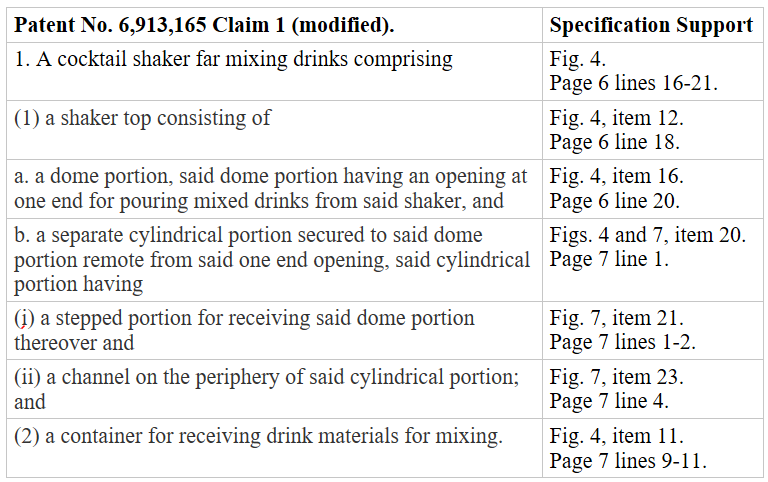Mining the Patent Specification for Infringement Using Continuations
One of the important aspects of proactive patent prosecution is having a detailed patent disclosure, and having a continuation on file at all times. With a detailed disclosure and a pending continuation, a patent owner is able to mine its detailed patent specification and draft claims toward its competitors' products.
What is Mining the Specification and Why Is It Beneficial? Patent specifications contain several parts. The figures and detailed description contain all of the information disclosed about how to make and use the invention(s). A valuable patent specification will have disclosure of multiple variations of an invention, and may have multiple different inventions. The claims of a patent are the only legally enforceable portion of the patent. Each patent application may have claims directed to only one invention. Therefore, the claims are much narrower than the disclosure in the figures and detailed description of the specification.
Initially, as your competitors introduce products into the market, a few things may occur if there is overlap with your patent:
competing products infringe claims of your first patent(s),
competing products that may arguably infringe the issued claims but there may be some issues where the infringement is questionable; and/or
competing products contain features that you have disclosed in your patent specification but have not specifically claimed.
Continuations are like a "time machine" that allow you to go back in time (to your original filing date) and write better claims with knowledge of how the patent is currently infringed. You can obtain additional patents with your original priority date with better claims:
you can strengthen your broad claims from the validity and infringement perspective by getting new patents where the broad claims are narrowed by adding additional disclosed features that are also infringed;
you can negate your competitor's attempts to "design around" your claims by writing new claims that are written directly on the infringing product with support from your specification; and,
you can prioritize the filing of new claims on narrow features first disclosed in your application based on their implementation by competitors in the market.
Thus, as patent portfolios age, the core concept of the original claims can be used as a framework for later claims to track what competitors are doing. Using continuations, the core concept of the claims can be modified by broadening (removing aspects from the claims) and narrowing the claims (using the additional disclosure that was not initially the focus of claims in earlier patents). By doing this, numerous patents and claims of different scope can be drafted over time that are tailored to exactly what your competitors are doing.
In addition to being able to write claims directly onto what your competitors are doing (to the extent your original detailed specification supports those claims), the number of patents and varying scope of the claims makes it hard for a competitor to "design around" or invalidate all of your claims because there will be numerous patents of varying scope and features (all based on the same core concept). Starting with a detailed provisional will help your eventual patents in this regard as they age.
This is mining the specification for infringement with continuations. With proactive prosecution and mining the specification, you can ultimately obtain a large number of infringed claims of varying scope across numerous patents. This can turn a single patent into a formidable patent portfolio that can be difficult and very expensive for your competitors to prevail against.
How do You Mine the Specification for Infringement? The following general process may be used to “mine” the specification for infringement:
Identify the activity/products of your competitors that would "infringe" (currently unclaimed) portions of your specification (if issued claims existed).
Important: Make certain that each activity/product identified began after your priority date.
For each activity or product identified:
Find the support in your patent specification that describes the actions/product of your competitors; and,
Use a continuation application to draft claims focused on the particular actions of the particular competitor identified.
A Simple Example. In my post titled “What is a Patent Specification Support Chart?,” I created a support chart for a hypothetical simplified cocktail shaker patent.
Continuing this example: if you are the owner of the hypothetical simplified cocktail shaker patent, you could identify your competitors that are selling popular cocktail shaker designs that you believe infringe your patent.
Perhaps you have identified this new cocktail shaker from a competitor:
The problem with the infringement here, is that the claim requires a “a shaker top consisting of … a dome portion ….” The competitor’s new product has a top that is flattened and not clearly a “dome.”
To fix this, a continuation can be used.
Starting with the claim support chart, we can create an infringement chart by first describing the desired infringement.
Next, to the extent it is not already part of the support chart, we can describe the support in the specification.
Third, update or draft a new claim element by element that is both infringed and supported and enabled by the specification.
You might make a chart that looks like the following simple example:
The resulting claim can be filed in a continuation, and if issued, asserted against the competitor.








